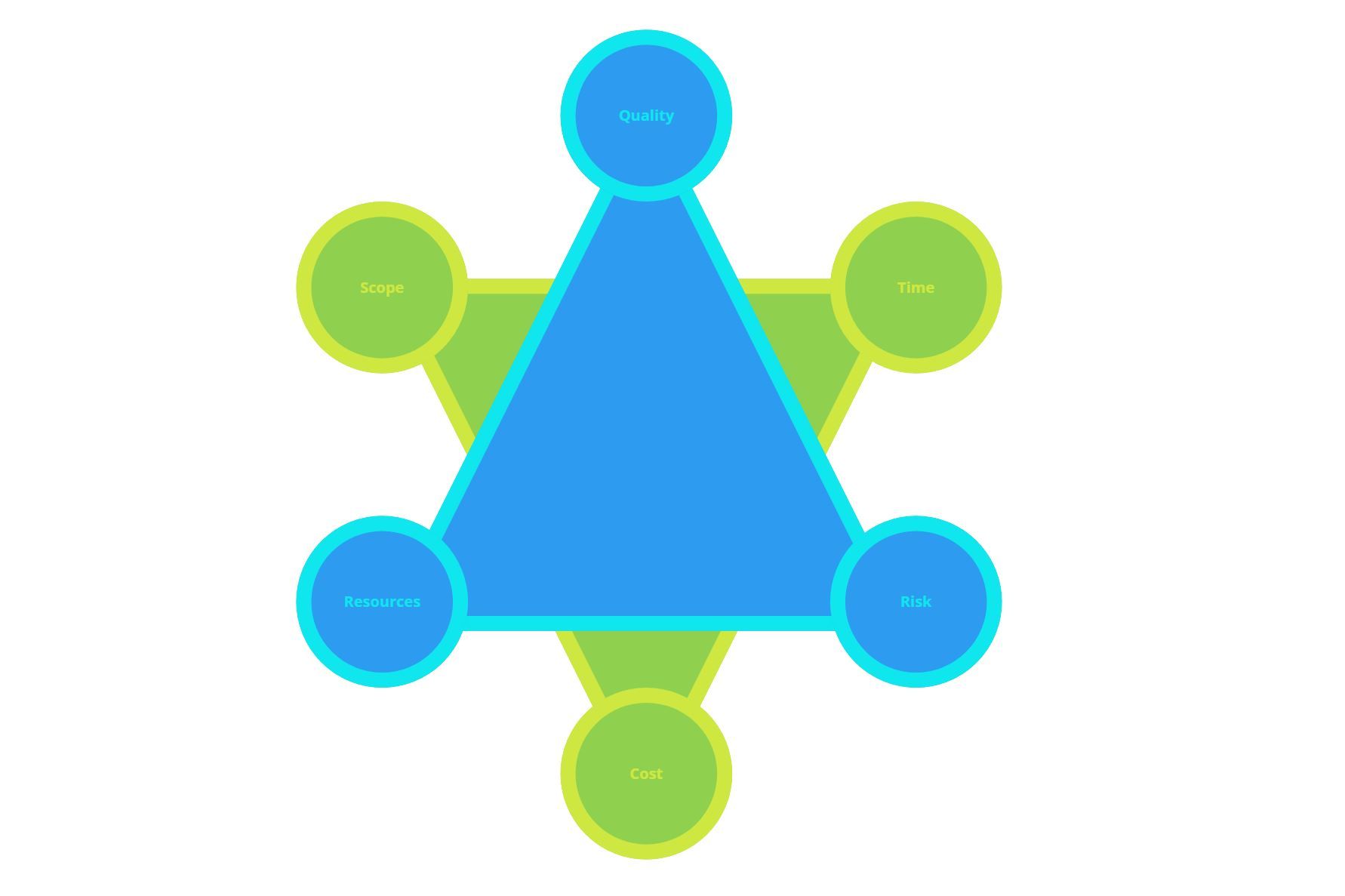What is the Six Constraints Model?

The Six Constraints Model is a more holistic approach to project management, considering a broader range of factors that can influence the success of a project. The concept of expanding the traditional Iron Triangle (or Triple Constraint) of project management to include more elements has been around for some time in the field. However, it's difficult to pinpoint a specific originator for the Six Constraints Model, as it's more of an evolution of thought in the project management community rather than a formal model proposed by a specific individual or organization.
The traditional Iron Triangle model includes scope, time, and cost and has been a cornerstone of project management for many years. However, project managers and theorists began recognizing that successful projects often depended on more than just these three factors. Quality, for instance, has long been recognized as an important factor and is sometimes included in the Iron Triangle to form a "Project Management Diamond."
Including other factors, like risk and customer satisfaction, in a Six Constraints Model reflects a broader view of project management. It acknowledges that managing a project isn't just about delivering a product on time and within budget but also about managing potential problems (risk) and ensuring that the final product meets or exceeds the customer's needs and expectations (customer satisfaction).
The Six Constraints Model, therefore, is part of an ongoing evolution of project management theory as practitioners continue to refine and expand their understanding of what contributes to a project's success.
Project managers or organizations might use slightly different models depending on their needs and experiences. The important thing is to understand that successful project management involves balancing multiple interconnected factors.

